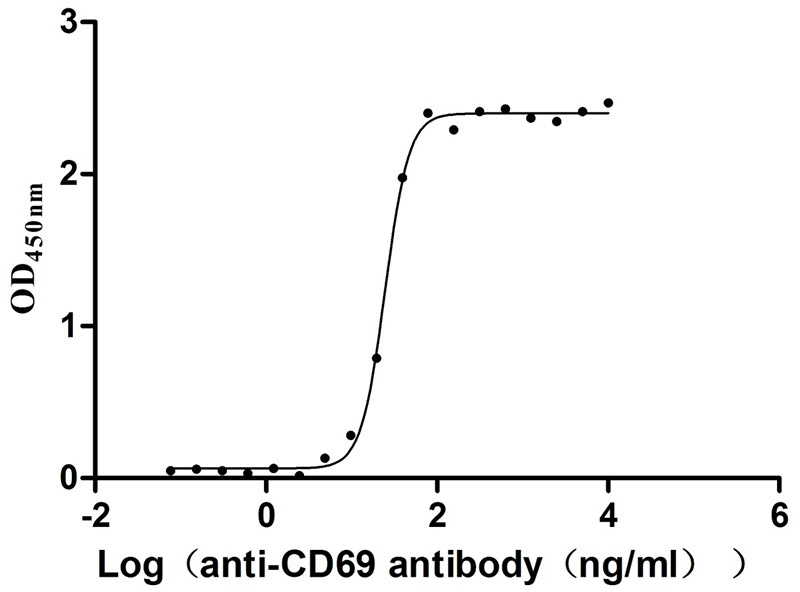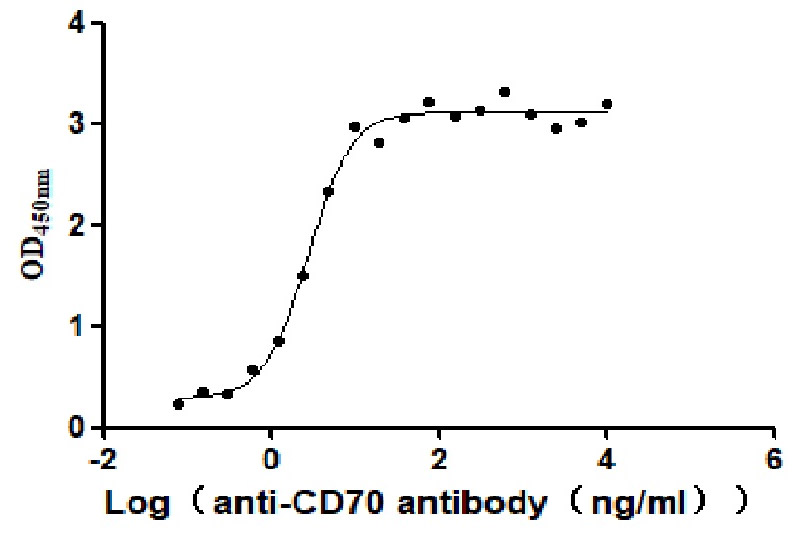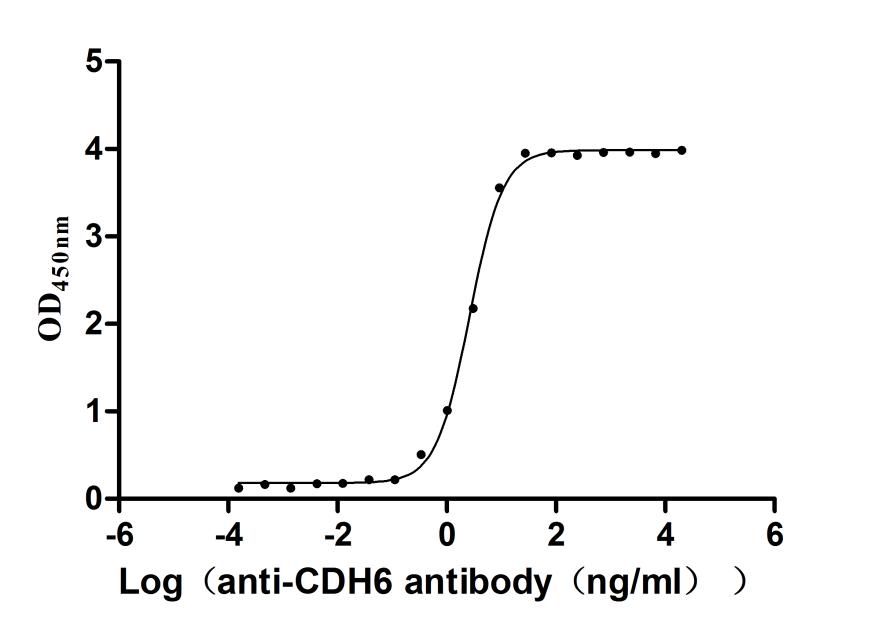Recombinant Rat Hormone-sensitive lipase (Lipe), partial
-
中文名称:大鼠Lipe重组蛋白
-
货号:CSB-YP012975RA
-
规格:
-
来源:Yeast
-
其他:
-
中文名称:大鼠Lipe重组蛋白
-
货号:CSB-EP012975RA
-
规格:
-
来源:E.coli
-
其他:
-
中文名称:大鼠Lipe重组蛋白
-
货号:CSB-EP012975RA-B
-
规格:
-
来源:E.coli
-
共轭:Avi-tag Biotinylated
E. coli biotin ligase (BirA) is highly specific in covalently attaching biotin to the 15 amino acid AviTag peptide. This recombinant protein was biotinylated in vivo by AviTag-BirA technology, which method is BriA catalyzes amide linkage between the biotin and the specific lysine of the AviTag.
-
其他:
-
中文名称:大鼠Lipe重组蛋白
-
货号:CSB-BP012975RA
-
规格:
-
来源:Baculovirus
-
其他:
-
中文名称:大鼠Lipe重组蛋白
-
货号:CSB-MP012975RA
-
规格:
-
来源:Mammalian cell
-
其他:
产品详情
-
纯度:>85% (SDS-PAGE)
-
基因名:
-
Uniprot No.:
-
别名:Lipe; Hormone-sensitive lipase; HSL; EC 3.1.1.79
-
种属:Rattus norvegicus (Rat)
-
蛋白长度:Partial
-
蛋白标签:Tag type will be determined during the manufacturing process.
The tag type will be determined during production process. If you have specified tag type, please tell us and we will develop the specified tag preferentially. -
产品提供形式:Lyophilized powder
Note: We will preferentially ship the format that we have in stock, however, if you have any special requirement for the format, please remark your requirement when placing the order, we will prepare according to your demand. -
复溶:We recommend that this vial be briefly centrifuged prior to opening to bring the contents to the bottom. Please reconstitute protein in deionized sterile water to a concentration of 0.1-1.0 mg/mL.We recommend to add 5-50% of glycerol (final concentration) and aliquot for long-term storage at -20℃/-80℃. Our default final concentration of glycerol is 50%. Customers could use it as reference.
-
储存条件:Store at -20°C/-80°C upon receipt, aliquoting is necessary for mutiple use. Avoid repeated freeze-thaw cycles.
-
保质期:The shelf life is related to many factors, storage state, buffer ingredients, storage temperature and the stability of the protein itself.
Generally, the shelf life of liquid form is 6 months at -20°C/-80°C. The shelf life of lyophilized form is 12 months at -20°C/-80°C. -
货期:Delivery time may differ from different purchasing way or location, please kindly consult your local distributors for specific delivery time.Note: All of our proteins are default shipped with normal blue ice packs, if you request to ship with dry ice, please communicate with us in advance and extra fees will be charged.
-
注意事项:Repeated freezing and thawing is not recommended. Store working aliquots at 4°C for up to one week.
-
Datasheet :Please contact us to get it.
靶点详情
-
功能:Lipase with broad substrate specificity, catalyzing the hydrolysis of triacylglycerols (TAGs), diacylglycerols (DAGs), monoacylglycerols (MAGs), cholesteryl esters and retinyl esters. Shows a preferential hydrolysis of DAGs over TAGs and MAGs and preferentially hydrolyzes the fatty acid (FA) esters at the sn-3 position of DAGs. Preferentially hydrolyzes fatty acids at the sn-1 and sn-2 positions of TAGs. Catalyzes the hydrolysis of 2-arachidonoylglycerol, an endocannabinoid and of 2-acetyl monoalkylglycerol ether, the penultimate precursor of th...显示更多
-
基因功能参考文献:
- Habitual exercise training acts as a physiological stimulator for constant activation of lipolytic enzymes, HSL and ATGL, in rat primary white adipocytes. PMID: 26141235
- The findings suggest that progesterone, acting in a progesterone receptor-dependent manner, down-regulates Lipe gene expression but exerts no effect on Pnpla2 gene expression in the inguinal white adipose tissue of females. PMID: 25448749
- These findings suggest that acute exercise enhances lipolysis up to at least 3h after exercise in a manner dependent on modification of HSL and its association with and alteration in scaffold protein. PMID: 20708600
- When compared with obesity-resistant rats, the gene expression of HSL in white adipose tissue was lower in obesity-prone rats. PMID: 17712951
- hormone-sensitive lipase is involved in mediating beta-cell lipotoxicity by providing ligands for peroxisome proliferator-activated receptors and other lipid-activated transcription factors, which in turn alter the expression of critical genes. PMID: 12882923
- interaction of HSL with StAR in cytosol increases the hydrolytic activity of HSL and that together HSL and steroidogeneic acute regulatory protein facilitate cholesterol movement from lipid droplets to mitochondria for steroidogenesis PMID: 12925534
- an 89-kDa isoform of hormone-sensitive lipase (HSL) and its molecular structure is described; the novel HSL isoform is expressed in the pancreatic beta-cell, adipose tissue, adrenal gland, and ovary PMID: 14576146
- hormone sensitive lipase is phosphorylated by 5' AMP-activated protein kinase at Ser(565) during muscle contractions, but this phosphorylation is not directly responsible for the contraction-induced activation of HSL PMID: 15033481
- Immunoreactive hormone-sensitive lipase (HSL) and HSL activity were found in lactating rats' milk PMID: 15654127
- The length of the regulatory module and specific sequences within the C-terminal portion of the regulatory module of hormone sensitive lipase (amino acids 644-683) are crucial for activity and appear to be responsible for determining lipase activity. PMID: 15697220
- Upregulated by rosiglitazone. PMID: 15887043
- HSL labeling in the nucleus of epithelial and germ cells suggests an as yet unknown function for this protein, probably related to oogenesis and cell proliferation. PMID: 18824635
- The retinyl ester hydrolase activity of rat HSL was found to be higher than that against the hitherto best known HSL substrate, i.e., diacylglycerols. PMID: 19246492
- PKA phosphorylation induces a conformational change that increases the exposed hydrophobic surface and thereby facilitates binding of HSL to the lipid substrate. PMID: 19664063
收起更多
-
亚细胞定位:Cell membrane. Membrane, caveola. Cytoplasm, cytosol. Lipid droplet.
-
蛋白家族:'GDXG' lipolytic enzyme family
-
组织特异性:Highly expressed in the adipose tissue. Also expressed in the heart, adrenal gland and testis.
-
数据库链接:



















